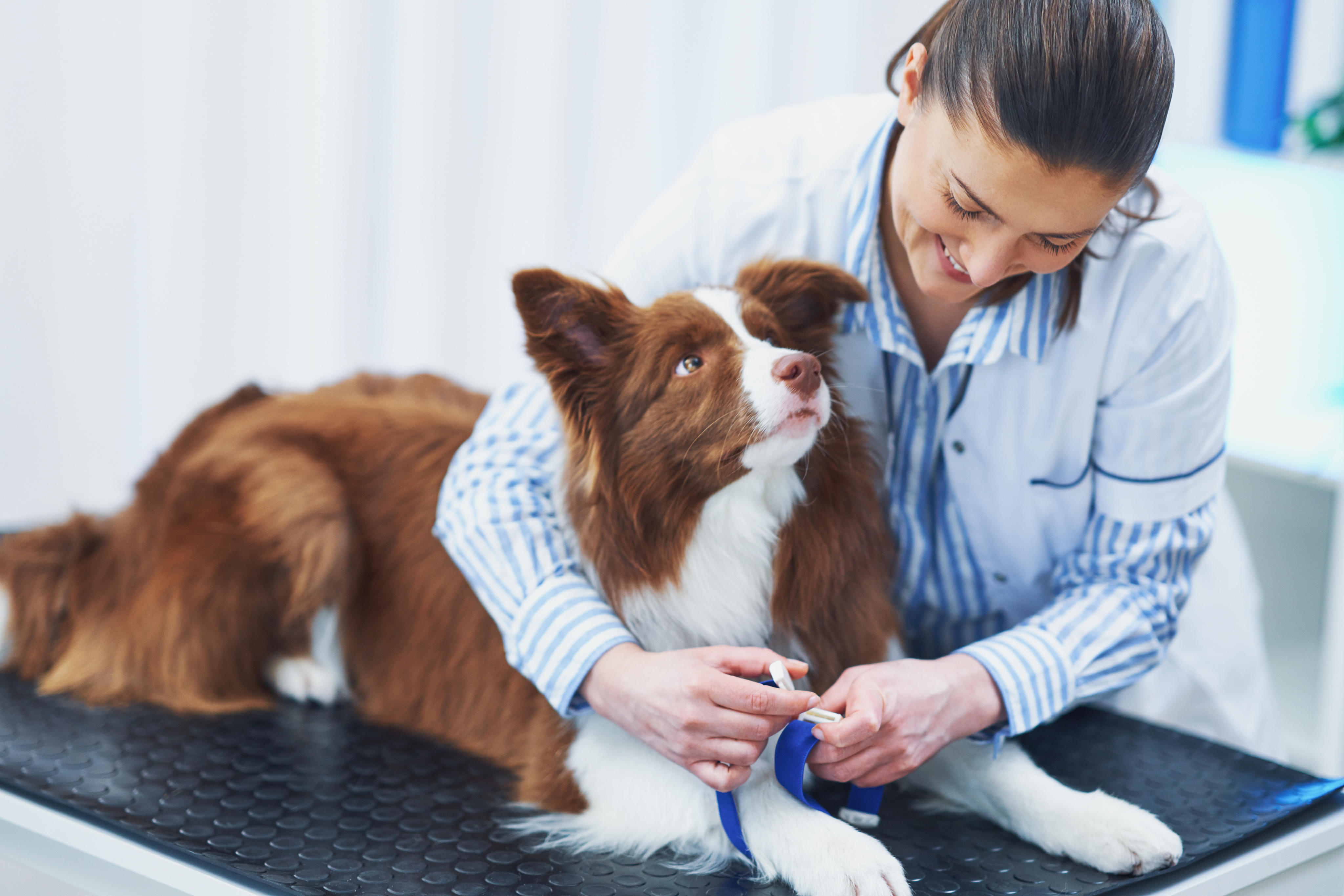/
/
/
/
/
Use these data insights to improve heifer reproduction efficiency
By Dr. Luís Mendonca, D.V.M., M.S., Dairy Technical Services, Merck Animal Health
After a heifer calf hits the ground, what are the chances she will survive calfhood, reach the breeding pen, become pregnant and deliver a healthy calf herself? Many variables affect a heifer’s journey from birth to the milking string.
In the past, dairies often had surplus heifers. But as more dairies move to dairy x beef crossbreeding, they often have fewer replacement heifers available. That leaves less room for error when it comes to heifer reproduction. On the flip side, continuous improvements in semen cell sorting technology creates opportunities to generate more and higher-value replacements at maturity with the use of sexed semen.
A deep dive into your herd records may hold insights to help improve heifer reproduction efficiency, ensure adequate replacement numbers and add value to your operation.
How many replacement heifers do you need?
Several factors must be considered when determining the number of heifers you need to breed and freshen each year to maintain a constant herd size, such as:
- Milking herd turnover rate. The number of cows leaving the herd each year dictates how many replacements are needed.
- Calf and heifer inventory. This inventory must account for youngstock exiting the herd, not just the number of calves born.
Think of your heifer raising program as a funnel. No matter how many heifers are born – entering the top of the funnel – only a certain percentage will enter the milking herd at the bottom of the funnel. Your heifer inventory and reproduction programs need to account for mortality, infertility or other losses along the way.
When projecting heifer inventory, be mindful of the challenges that influence the mortality of young calves. High calf mortality may put more pressure on the reproductive program to ensure you have enough pregnant heifers to restock your milking string.
Scours and respiratory disease are among the biggest challenges to calf health, especially in the first few months of life. One study1 with two commercial dairies tracked 472 calves from birth through their first lactations. Overall, only two-thirds of the calves made it to their first lactations. But of those who experienced diarrhea and fever as calves, the percentage reaching lactation was less than 60%. Conversely, among calves who did not experience diarrhea and scours, approximately 80% survived to lactation.
Another study2 showed similar impacts from pneumonia on age at first calving. Of calves experiencing respiratory disease at two to four months of age, only 66% reached their first lactations. Among calves without respiratory disease, 84% reached first lactations.
It’s important to understand how disease incidence affects heifer inventory in each herd. That means digging into your records. Watch for trends in the number of cases. For example, one facility spotted spikes in pneumonia cases in hutch calves at about 40 days of age. A second spike in pneumonia occurred at about 100 days of age, after moving calves to group pens. Records analysis allowed the manager and veterinarian to design vaccination programs to minimize the risk of pneumonia at these vulnerable times. Furthermore, attention to cow vaccination programs, colostrum management, hygiene in the maternity pen and feeding practices can go a long way toward preventing calfhood disease as well.
Disease records provide evidence for other decisions, including culling. Lifetime records can reveal how an individual calf’s disease history impacts future fertility and lactation performance. In addition, disease records can provide early warning of a potential shortage in heifers and determine the need for more pregnancies in the months ahead. Herds should strive to maintain accurate and complete records to take advantage of data insights. In addition, it is key to standardize disease diagnoses and recordkeeping in each facility to ensure good quality of the data
Maximize heifer pregnancies to shorten days to conception
Days to conception is a key measurement of reproductive success. With the high cost of feed, an additional five to 10 days can significantly impact a dairy’s bottom line. The following factors influence days to conception and the number of pregnant heifers in your herd:
- Conception rate. This is a big driver of reproductive efficiency. Maintaining a high conception rate is a must. Although operations vary, a reasonable goal is at least 50% conception at first service.
- Days to first service. Inseminating heifers as soon as possible is the best strategy to reduce days to conception. Strive for 90% or more heifers bred in the first 21 days after entering the breeding pen. If you use DairyComp 305, be sure to accurately assign the date when heifers are moved to the breeding pen. If that information is missing or wrong, your metrics will be misleading. In DairyComp, you can track days to first service by subtracting date of first service from AIDAT.
- Reinsemination interval. Because not all heifers will become pregnant in the first service, it is important to strive to reduce reinsemination interval by having an accurate and efficient heat detection program.
Overall, seek to maximize the percentage of heifers pregnant within 100 to 150 days after entering the breeding pen. With good management, at least 90% of heifers should become pregnant in this timeframe.
Role of monitoring technology
Technology continues to develop to improve reproductive efficiency. Whether through ear tags or collars, activity monitoring can improve accuracy of heat detection and improve response to prostaglandin treatments.
In a University of Florida study3, 1,019 Holstein heifers were fitted with activity monitoring collars from Allflex Livestock Intelligence. Researchers evaluated the results of administering either Estrumate® (cloprostenol injection) or Lutalyse® (dinoprost tromethamine injection) to induce estrus. Also, the researchers evaluated the response to both active ingredients according to the stage of the estrous cycle, which was determined by occurrence of previous heats detected by the Allflex activity monitoring system.
Heifers that were in heat 13 to 23 days before the prostaglandin injection had greater conception rate (62.8%) than the ones that were in heat four to 12 days before the injection (<45%). In addition, among heifers that were in heat seven to 12 days prior to the prostaglandin injection, Estrumate resulted in a greater proportion of heifers in heat than Lutalyse. Previously, researchers have shown that stage of the estrous cycle at prostaglandin treatment will influence the response of the injection. Poor response is expected in heifers that were in heat three to five days prior to a prostaglandin injection. Altogether, findings from this study suggest that targeted administration of prostaglandin may maximize fertility in herds utilizing monitoring technology.
Monitoring technology also can help determine the optimal number of heat events before heifers are eligible for insemination. Conception rates may increase by waiting for the heifer to have a couple of heats before moving her to the breeding pen. Making breeding pen moves based on heifers’ cyclicity status besides age or weight can help overcome space limitations in the pen, too.
When considering monitoring technology as a tool to fine-tune reproductive efficiency, ask for research to back up manufacturer’s claims. Ensure the system is compatible with your existing software and recordkeeping systems. Just like different types of cell phones, different monitoring technologies function differently. Each system has its own algorithms. Make sure the monitoring system generates actionable information – not just data.
Conclusion
Data insights from records and monitoring technology can help identify breeding bottlenecks, uncover areas of opportunity and assist in making decisions to increase efficiency. By optimizing heifer reproduction, you can help ensure adequate replacements to keep your herd at peak efficiency.
Important Safety Information
ESTRUMATE: Do not administer ESTRUMATE to a pregnant cow unless abortion is desired. Severe localized post-injection clostridial infections have been reported; in rare instances infection has led to death. Women of childbearing age, asthmatics, and persons with respiratory problems should exercise extreme caution when handling ESTRUMATE. ESTRUMATE is readily absorbed through the skin and may cause abortion and/or bronchospasms; direct contact with the skin should be avoided, and accidental spillage on the skin should be washed off immediately with soap and water. For complete safety information, refer to the product label.
References:
- Chebel RC, Lopes G Jr, Mendonça LGD, Hayes, S. Effect of Gammulin supplementation during the first 24 d of life on health, growth and first lactation performance of Holstein cows. J. Dairy Sci. 2021:104(12):12567-12679.
- Stanton AL, Kelton DF, LaBlanc SJ, Wormuth J, Leslie, KE. The effect of respiratory disease and a preventative antibiotic treatment on growth, survival, age at first calving, and milk production of dairy heifers. J. Dairy Sci. 2012:95(9):4950-4960.
- Veronese A, Marques O, Moriera R, Belli AL, Bilby TR, Chebel RC. Estrous characteristics and reproductive outcomes of Holstein heifers treated with 2 prostaglandin formulations and detected in estrus by an automated estrous detection or mounting device. J. Dairy Sci. 2019:102(7):6649-6659.
Estrumate® is a registered trademark of Intervet Inc.
Lutalyse® is a registered trademark of Zoetis Services LLC.




 Go To United States
Go To United States Algeria
Algeria Argentina
Argentina Australia
Australia Austria
Austria Bahrain
Bahrain Belgium (Dutch)
Belgium (Dutch) Brazil
Brazil Canada (English)
Canada (English) Chile
Chile Colombia
Colombia Croatia
Croatia Czech Republic
Czech Republic Denmark
Denmark Ecuador
Ecuador Egypt
Egypt Finland
Finland France
France Germany
Germany Greece
Greece Hungary
Hungary India
India Indonesia
Indonesia Iraq
Iraq Ireland
Ireland Israel
Israel Italy
Italy Japan
Japan Jordan
Jordan Kuwait
Kuwait Lebanon
Lebanon Malaysia
Malaysia Mexico
Mexico Morocco
Morocco Netherlands
Netherlands New Zealand
New Zealand Norway
Norway Oman
Oman Panama
Panama Peru
Peru Philippines
Philippines Poland
Poland Portugal
Portugal Qatar
Qatar Romania
Romania Russian Federation
Russian Federation Saudi Arabia
Saudi Arabia South Africa
South Africa South Korea
South Korea Spain
Spain Sweden
Sweden Switzerland (French)
Switzerland (French) Taiwan
Taiwan Thailand
Thailand Tunisia
Tunisia Turkey
Turkey Ukraine
Ukraine United Arab Emirates
United Arab Emirates United Kingdom
United Kingdom Uruguay
Uruguay Yemen
Yemen Global
Global